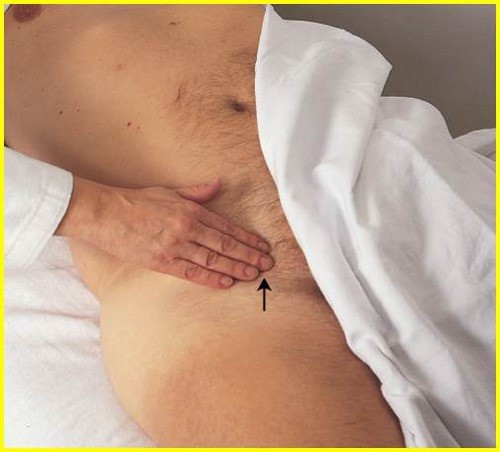A nurse is caring for a child who is postoperative following a tonsillectomy.
Which of the following findings indicates that the child may be experiencing hemorrhage?
Elevated pain level.
Increased drowsiness.
Frequent swallowing.
Diminished breath sounds.
The Correct Answer is C
The correct answer is choice C, frequent swallowing.
This indicates that the child may be experiencing hemorrhage because they are trying to clear the blood from their throat. Frequent swallowing is one of the initial signs of bleeding immediately after tonsillectomy.
Choice A is wrong because elevated pain level is not a specific sign of hemorrhage.
Pain is expected after a tonsillectomy and can be managed with medication and fluids.
Choice B is wrong because increased drowsiness is not a specific sign of hemorrhage.
Drowsiness can be caused by anesthesia, medication, or dehydration.
Choice D is wrong because diminished breath sounds are not a specific sign of hemorrhage.
Diminished breath sounds can be caused by respiratory infection, asthma, or bronchospasm.
Normal ranges for hemoglobin and hematocrit are 11.5 to 15.5 g/dL and 34 to 45% for children, respectively.
Normal ranges for platelet count are 150,000 to 450,000/mm3 for both children and adults.
Normal ranges for plasma clotting variables depend on the specific test and method used.
Nursing Test Bank
Naxlex Comprehensive Predictor Exams
Related Questions
Correct Answer is C
Explanation

This is because coarctation of the aorta is a congenital condition where the aorta is narrow, usually in the area where the ductus arteriosus inserts. This causes a decrease in blood flow to the lower body, resulting in weak or absent pulses in the femoral arteries.
The other choices are incorrect for the following reasons:
- Choice A, frequent nosebleeds, is not a typical sign of coarctation of the aorta.
Nosebleeds can be caused by many factors, such as dry air, allergies, trauma, or bleeding disorders.
- Choice B, upper extremity hypotension, is also not a common finding in coarctation of the aorta. In fact, patients with this condition may have high blood pressure in the upper extremities due to the increased resistance of the narrowed aorta.
- Choice D, increased intracranial pressure, is not directly related to coarctation of the aorta.
Increased intracranial pressure can be caused by various conditions that affect the brain, such as head injury, stroke, infection, or tumor.
Normal ranges for blood pressure and pulse vary depending on age, sex, and health status.
However, some general guidelines are:
- Blood pressure: less than 120/80 mmHg for adults; less than 95/65 mmHg for infants.
- Pulse: 60 to 100 beats per minute for adults; 100 to 160 beats per minute for infants.
Correct Answer is D
Explanation
The correct answer is D. Remind the client to use the incentive spirometer.
Choice A rationale:
Observing the position of the suspended weight is beyond the scope of practice for assistive personnel (AP). This task requires assessment skills to ensure proper alignment and functioning of the traction system, which is the responsibility of the nurse.
Choice B rationale:
Checking the client’s pedal pulse on the right leg involves assessment and clinical judgment to evaluate perfusion and detect potential complications such as impaired circulation. This is not a task that can be delegated to AP.
Choice C rationale:
Asking the client to describe her pain requires assessment and interpretation of subjective data, which falls under the nurse's scope of practice. Pain assessment is a critical nursing function.
Choice D rationale:
Reminding the client to use the incentive spirometer is a non-assessment task that involves reinforcing previously taught instructions. This is appropriate to delegate to assistive personnel, as it does not require clinical judgment.
Whether you are a student looking to ace your exams or a practicing nurse seeking to enhance your expertise , our nursing education contents will empower you with the confidence and competence to make a difference in the lives of patients and become a respected leader in the healthcare field.
Visit Naxlex, invest in your future and unlock endless possibilities with our unparalleled nursing education contents today
Report Wrong Answer on the Current Question
Do you disagree with the answer? If yes, what is your expected answer? Explain.
Kindly be descriptive with the issue you are facing.
